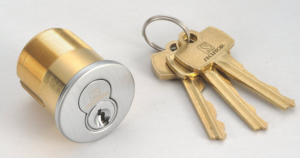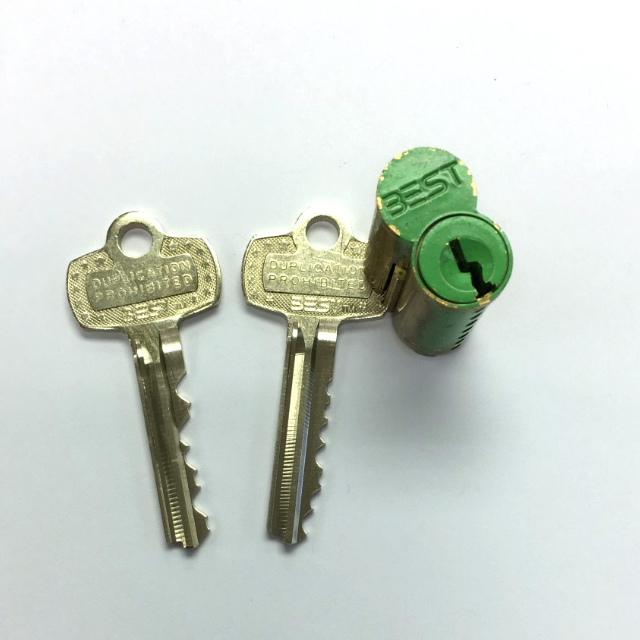In the vibrant world of construction, one key fits many locks, but not all. This is where the idea of different construction cores, such as SFIC (Small Format Interchangeable Core), comes in. These variations are like tailor-made solutions for buildings of all shapes and sizes.
Let’s take a closer look at why these different types of cores exist, with a spotlight on SFIC, and how they contribute to making buildings safer, smarter, and better aligned with their purposes. So, why exactly are there these distinct types of construction cores, and what makes SFIC stand out among them?

What are construction cores?
Construction cores are vertical spaces within buildings used for utility functions. These cores house essential services like elevators, staircases, and utility shafts. They ensure smooth operations and safety within the building.
Elevators are crucial for vertical movement between floors. Staircases provide an alternative during emergencies and for fitness. Utility shafts contain plumbing, electrical wiring, HVAC systems, and other utilities.
These cores maximize space efficiency by grouping utilities centrally. This design strategy optimizes usable space on each floor. It also simplifies maintenance and repairs, enhancing the building’s functionality.
The location of construction cores varies but is often centralized for convenience. Architects carefully plan their positioning to ensure accessibility and minimize disruption to the building’s layout.
What is the difference between SFIC core and LFIC core?
SFIC (Small Format Interchangeable Core) and LFIC (Large Format Interchangeable Core) are both key systems used in locks, often found in commercial buildings. They offer distinct features that cater to various security needs.
Key Size and Design:
SFIC cores are more compact, making them suitable for locks with limited space. On the other hand, LFIC cores are larger, allowing for additional security features and more complex mechanisms.
Interchangeability:
The term “interchangeable” refers to the ability to easily replace cores without changing the entire lock. SFIC cores are generally easier to replace and rekey, making them a cost-effective choice for buildings with frequent personnel changes.
Security Levels:
LFIC cores are known for providing higher security levels due to their larger design. They can accommodate more advanced security features, making them preferable for buildings that require heightened protection.
Application:
SFIC cores are commonly used in residential buildings, small offices, and places where convenience and quick rekeying are valued. LFIC cores find their place in institutions like banks, government facilities, and other locations with critical security needs.
Compatibility:
SFIC cores and LFIC cores are not interchangeable due to their size differences. Locks and hardware must be specifically designed to accommodate the chosen core type.
Installation and Maintenance:
Installing SFIC cores can be simpler due to their smaller size, while LFIC cores might require more intricate installation due to their larger mechanisms. Maintenance procedures also vary accordingly.
Cost Considerations:
SFIC cores often come at a lower cost initially, but LFIC cores might offer better long-term value for properties that demand higher security levels.
Choosing the Right Core for Your Needs
When selecting between SFIC and LFIC cores, consider the security requirements, the level of convenience needed for rekeying, the available space for the lock mechanism, and the overall budget. Consulting with a locksmith or security professional can help you make an informed decision.
Why Are There Different Types Of Construction Core Sfic
Exploring the Reasons for Different Types of Construction Cores: SFIC
Variety in Building Needs and Designs
The existence of different types of construction cores, such as SFIC (Small Format Interchangeable Core), is rooted in the diverse requirements and designs of buildings.
Space Constraints and Efficiency
SFIC cores are designed to address space limitations in certain buildings. Their compact size allows for optimal utilization of available space.
Residential and Small Offices
SFIC cores find popularity in residential buildings and small offices. These spaces usually prioritize convenience and straightforward rekeying.
Frequent Personnel Changes
Buildings with high turnover rates often require quick and affordable rekeying solutions. SFIC cores are easily replaceable and therefore ideal for such scenarios.
Ease of Installation and Maintenance
Due to their smaller size, SFIC cores can be easier to install and maintain compared to larger core types.
Budget Considerations
SFIC cores often come at a lower initial cost, making them a budget-friendly option for certain projects.
Flexibility and Adaptability
SFIC cores can be quickly replaced or rekeyed, providing flexibility as building needs evolve.
Security Levels
While SFIC cores offer convenience, they might not provide the same level of security as larger core types like LFIC (Large Format Interchangeable Core).
Customization and Architectural Choices
Architects and builders often opt for SFIC cores when designing spaces with specific aesthetic and functional requirements.
Balancing Convenience and Security
The choice between SFIC and other core types involves finding the right balance between convenience and security needs.
Accessibility and Code Compliance
SFIC cores can also be chosen based on building codes and accessibility requirements.
Tailoring Cores to Building Types
Different buildings, such as residential, commercial, and industrial, have unique security and operational demands. SFIC cores cater to the needs of smaller-scale spaces.
Adapting to Modern Trends
As buildings and technology evolve, the demand for certain core types like SFIC may increase due to their compatibility with modern security systems.
Final Words
Construction’s dynamic nature benefits from diverse core options like SFIC. Specialized cores meet each building’s needs, ensuring safety, efficiency, and style. Builders, architects, and owners benefit from understanding variations, creating secure, functional spaces. Core types exemplify customization, aiding specific requirements. Embracing various cores, including SFIC, supports thoughtful building solutions in evolving construction.

